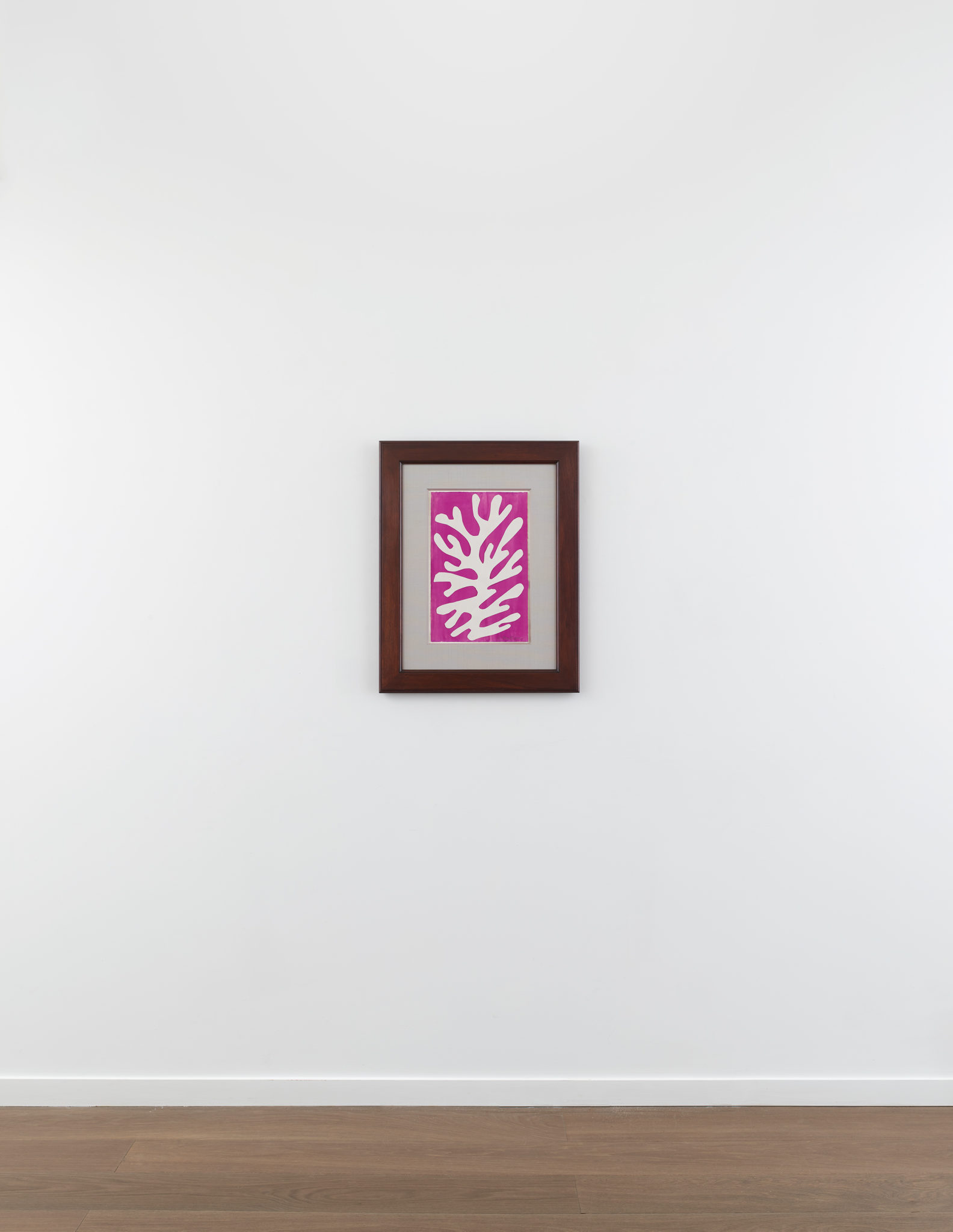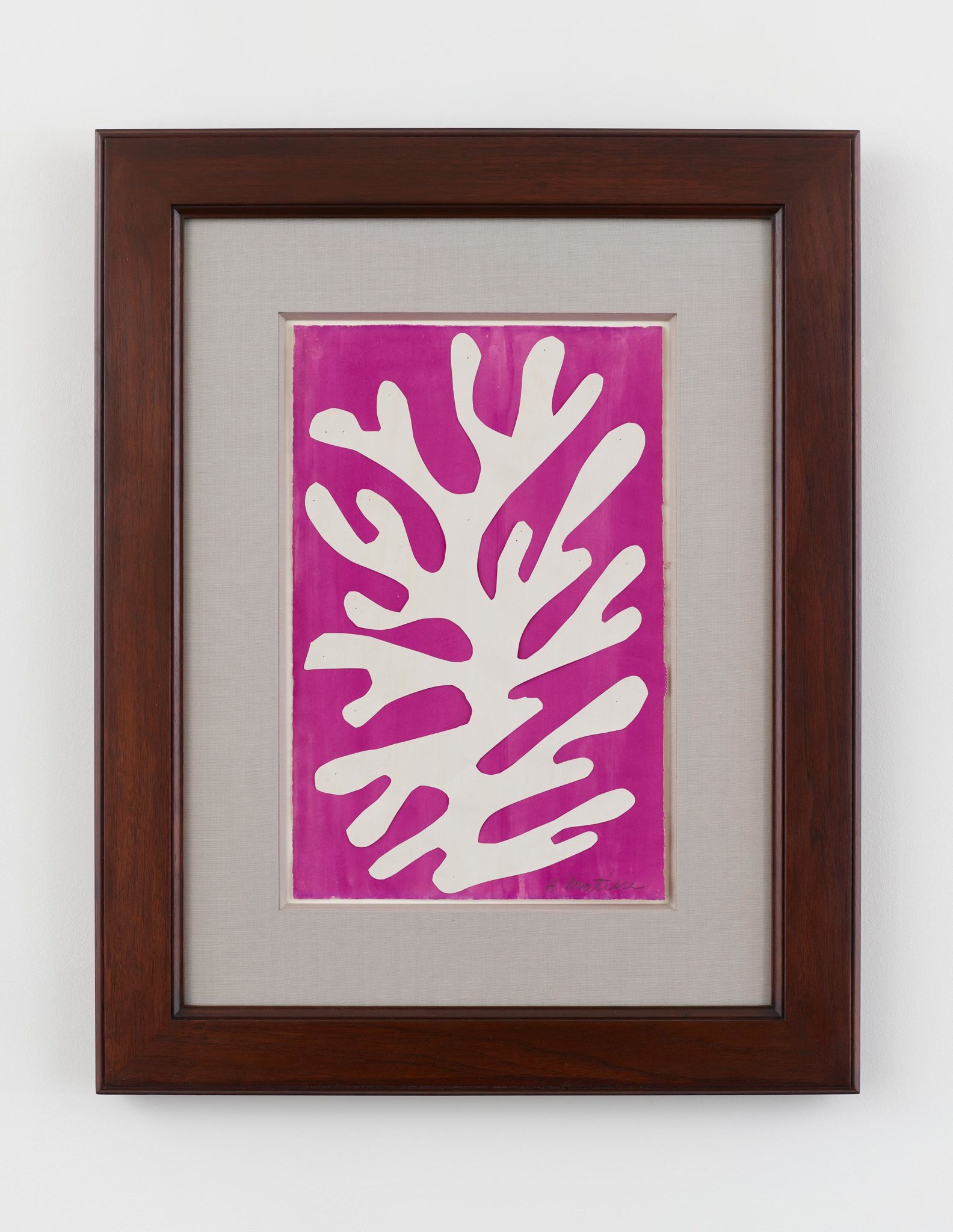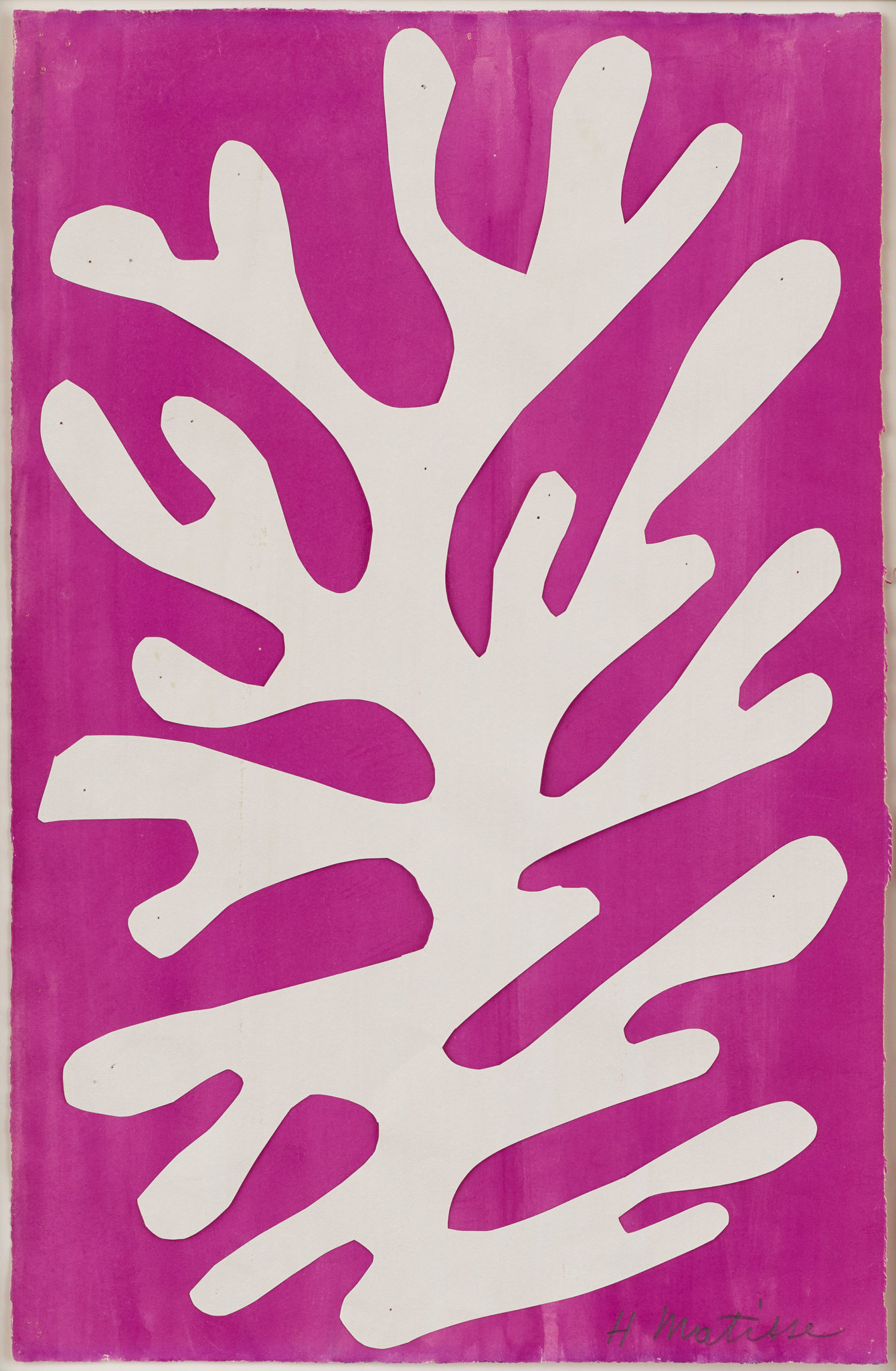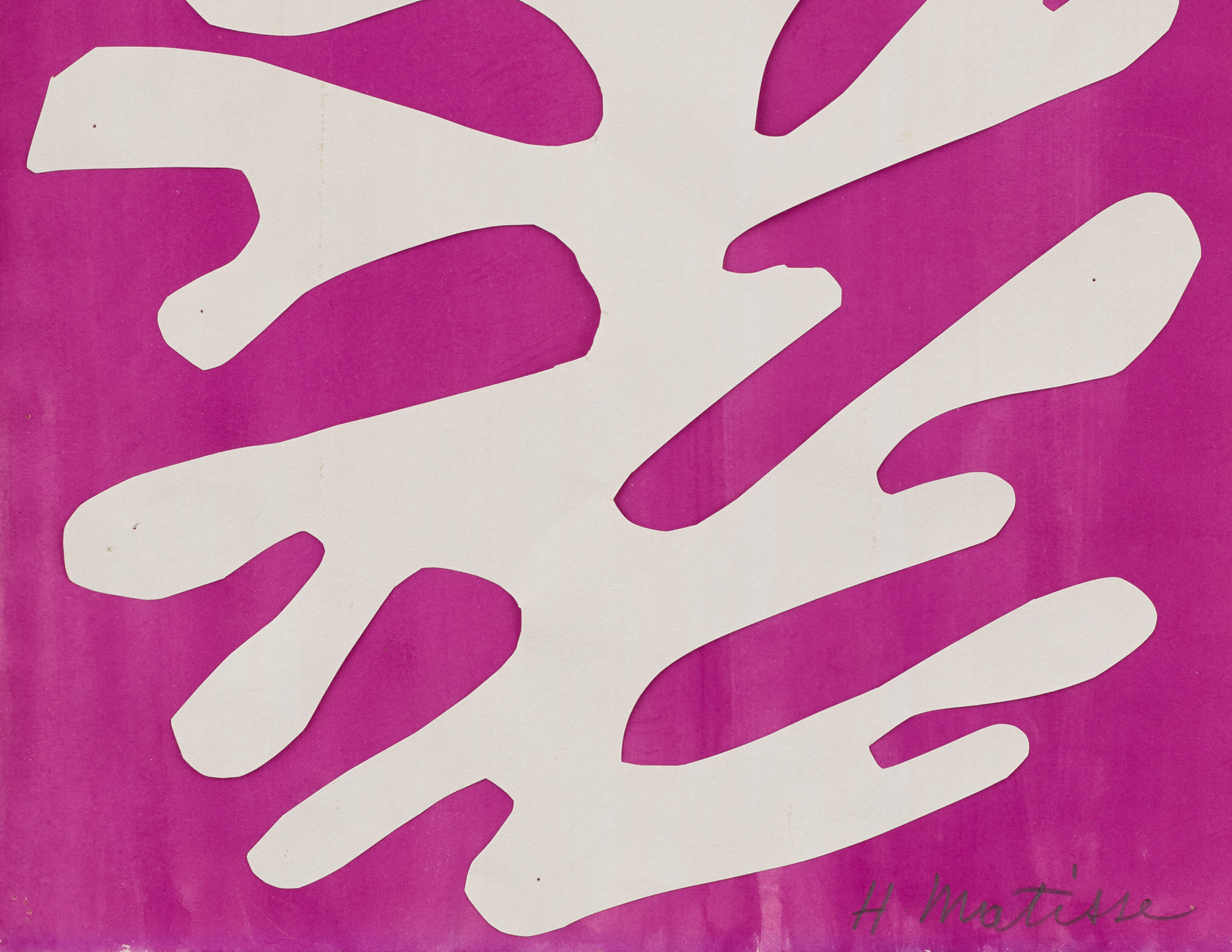Henri Matisse
Arbre de neige, 1947
Gouache and découpage on paper
16 x 10 1⁄4 inches (40.6 x 26 cm)
Signed H Matisse (lower right)
© Succession H. Matisse / DACS 2018
I have always tried to hide my efforts and wished my works to have the light joyousness of springtime which never lets anyone suspect the labors it has cost me.
— Henri Matisse, Quoted by Theodore F. Wolff in The Christian Science Monitor, March 25, 1985.
Henri Matisse began working intensively in the papier découpé medium in 1947, producing over 200 works before his death in 1954. Famously describing his cutout practice as “drawing with scissors,” the works embody the larger concerns of the artist’s oeuvre, namely the relationship between line and color. The cut-outs began as large sheets of paper painted with single gouache pigments selected by Matisse; the sheets were laid out before him in the studio and after choosing a color, the artist would create the cut-out, which would then be pinned to the wall.
The cut-outs allowed Matisse, in his words, to link “line with color, contour with surface,” for by cutting directly into colored paper, “the contour of a shape and its internal area were formed simultaneously.” While the cut-outs were initially met with a lukewarm response, they have since come to be known as a culmination of the artist’s career.
Matisse’s first sustained cut-out project was the illustrated book Jazz, which he began in 1943 and published in 1947. While this constituted the first mature effort in the cut-out medium, Matisse’s focus on the cut-outs was notably anticipated by the preliminary study he created for The Dancers mural in Albert Barnes’s home in Merion, Pennsylvania, completed in 1933. Jazz was closely followed by Matisse’s large-scale work designing the stained-glass windows at the Dominican Chapel of the Rosary in Vence, adopting the cut-out approach for the windows’ design process (he would work on the designs from 1948–51).
Arbre de neige is part of the first major series of approximately 15 works that Matisse began in April 1947, after the artist returned to Vence from Paris. On February 22, 1948, he wrote to André Rouveyre, “The walls of my bedroom are covered in cut-outs…I do not yet know what I will do with [them]…The result is of more importance than it would seem.” The present work would remain pinned to the wall of the Villa Le Rêve until February 1949 when Henri Matisse: Paintings, Papiers Découpés, Drawings 1945 – 1948 opened at Pierre Matisse Gallery in New York; this exhibition marked the first instance in which the cut-outs were treated as an autonomous body of work. Later that same year, the Musée National d’Art Moderne in Paris opened an exhibition of recent work by Matisse, titled Henri Matisse: Oeuvres Récents, which also included a substantial selection of cut-outs, including the present work.




